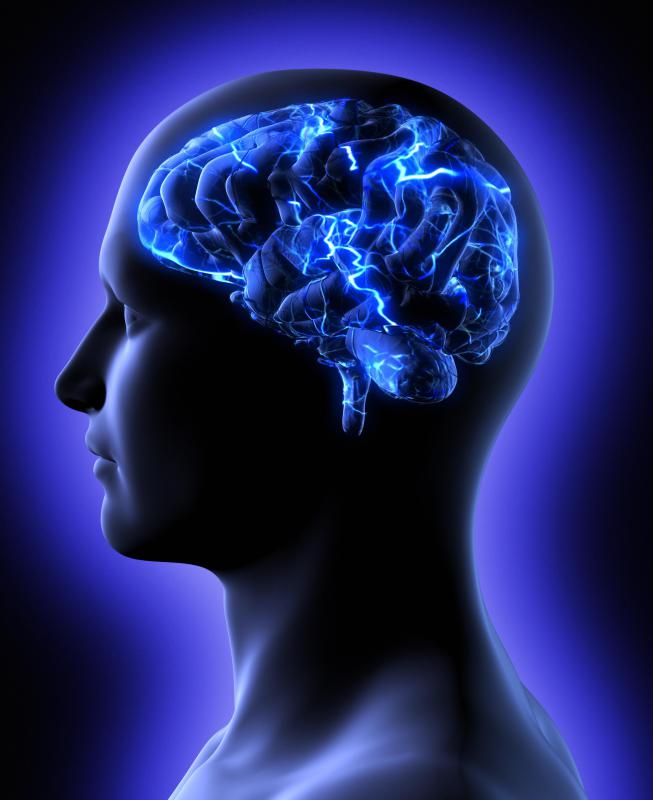At WiseGEEK, we're committed to delivering accurate, trustworthy information. Our expert-authored content is rigorously fact-checked and sourced from credible authorities. Discover how we uphold the highest standards in providing you with reliable knowledge.
What Is an EEG fMRI?
An electroencephalography-correlated functional magnetic resonance imaging (EEG fMRI) device allows the measurement of electrical brain waves while also analyzing changes in blood oxygen levels during spikes of brain activity. An EEG fMRI machine scans brain functions in real time and also video-records the activity for later examination. This medical equipment initially helped doctors pinpoint the area of the brain where epileptic seizures occur. More recent uses of an EEG fMRI include neuroscience research into brain disorders, sleep studies, and psychiatry.
The EEG portion of the test detects hikes in electrical waves throughout the entire brain. Scientists discovered they could also record the body’s metabolic response to brain activity by adding scans through magnetic resonance imaging. When the test was first used in 1993, doctors recorded electrical waves and changes in blood-oxygen levels separately to avoid obtaining mixed signals. Six years later, computer software came on the market to perform an EEG fMRI simultaneously.

An EEG fMRI scan typically occurs over a two-hour period. Electrodes are attached to the patient’s head and an amplifier, and linked to a computer. The test records fluctuations in brain activity and how they affect fMRI signals, defined as blood oxygen level dependent (BOLD) signs. BOLD represents the body’s metabolic response to brain waves. Doctors can determine if electrical activity created more or less oxygen in the blood.

Studies show most BOLD signals occur in the region of the brain where electrical activity is generated. Occasionally, these signals occur elsewhere, but an EEG fMRI often helps determine the type of epilepsy and the area of the brain affected. The results of the scan might aid in surgical strategies to destroy brain cells that spark seizures if that specific part of the brain does not control critical bodily functions.

These scans usually do not capture changes during an actual seizure because these episodes are unpredictable. Movement of the patient during a seizure would likely blur images picked up by the machine. The scan gives an overall view of brain activity and how blood oxygen levels correlate to spurts in neural changes.
Some studies found problems with EEG fMRI from inconclusive results. In some patients, no changes or insignificant changes in BOLD signals occurred when electrical activity increased. One study that mapped brain waves of epileptic patients over a long period of time in an attempt to identify regions in the brain that prompt seizures showed mixed results.
AS FEATURED ON:
AS FEATURED ON:













Discuss this Article
Post your comments